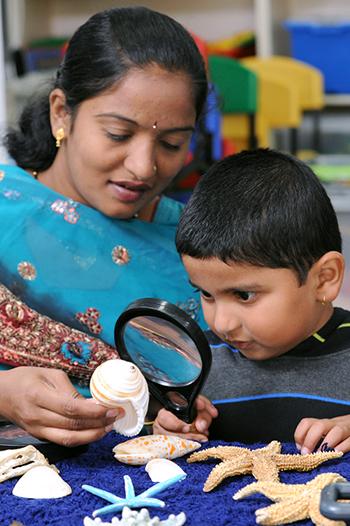Treasure hunt
Duration/age

Treasure hunts can be fun. Hide some sort of treasure - it doesn’t matter what. It could be a small gift or a message with a promise of a special treat, like five extra stories tonight, or a trip to feed the ducks. You will need to write some clues or directions. Write the clues or directions on individual cards. It could be ‘look in the letterbox’ and then in the letterbox it might say ‘look under the doormat’ and so on until your child finds the treasure.
Materials you will need
- Paper
- Pen
- Cardboard
- Toys
- Treats
Skills this activity improves
Why does this matter?
Children learn that print is a way of getting information. They are learning words and concepts like under, behind or next to. By following instructions children are combining understanding with doing.
What does this lead to?
Experimenting with reading print and following information in written form supports children to begin to understand concepts of print. As children read the messages they are beginning to understand that words are written in a consistent direction and that we read from left to right and then go on to the next line.
Language to use
- Treasure hunt
- Hunting, searching, hide, find, look, search
- Under, behind, next to, on, under, top, side, near, around
- First, next, last
- Clue, hint
Questions to use
- Where should we look?
- Should we check inside the cupboard?
- Where will we start?
- Where to next?
- It wasn’t there, so should we look somewhere else?
Useful tips
- For safety information visit www.parenting.sa.gov.au
- You will need to help younger children read the instructions and remember to use simple language.
- You might even make the clues harder as your child gets older. You might say ‘under somewhere you sleep' or ‘in something you drink from'
- You might also want to look at the Reading a map activity.
- Remember to talk to your child in your home language.
More ideas
- Your child can develop their own treasure hunts by writing or drawing their own clues for someone else to follow.
- Hide and seek is another activity involving directions.
Variation by age
Three to five year olds
- Your child can make their own treasure hunts by writing or drawing their own clues for someone else to follow.
- Hide and seek is another activity involving directions.
- Have a family picnic in the park and make a treasure hunt for the whole family.
- When it is Christmas or a birthday make a treasure map showing where your child’s gifts and special messages are hidden.
Questions to ask
- How many things did you find?
- Where was the last one you found?
- How many were inside and how many were outside?
- Do you think we found everything?


